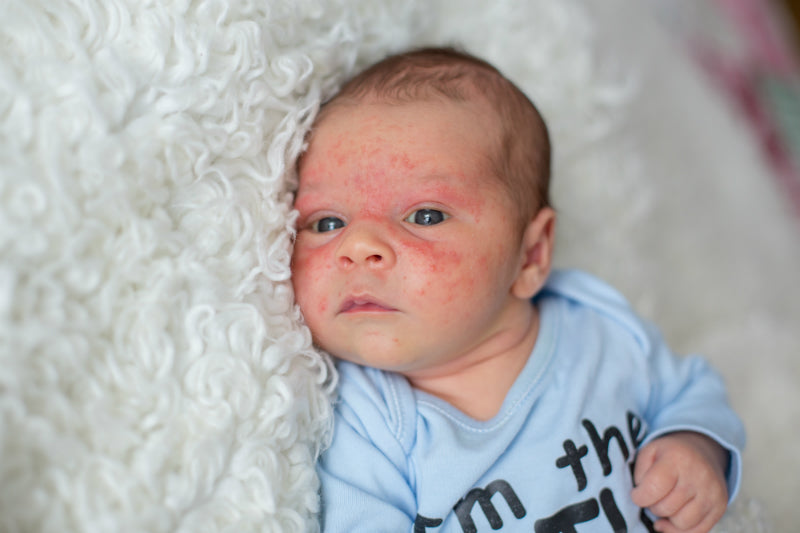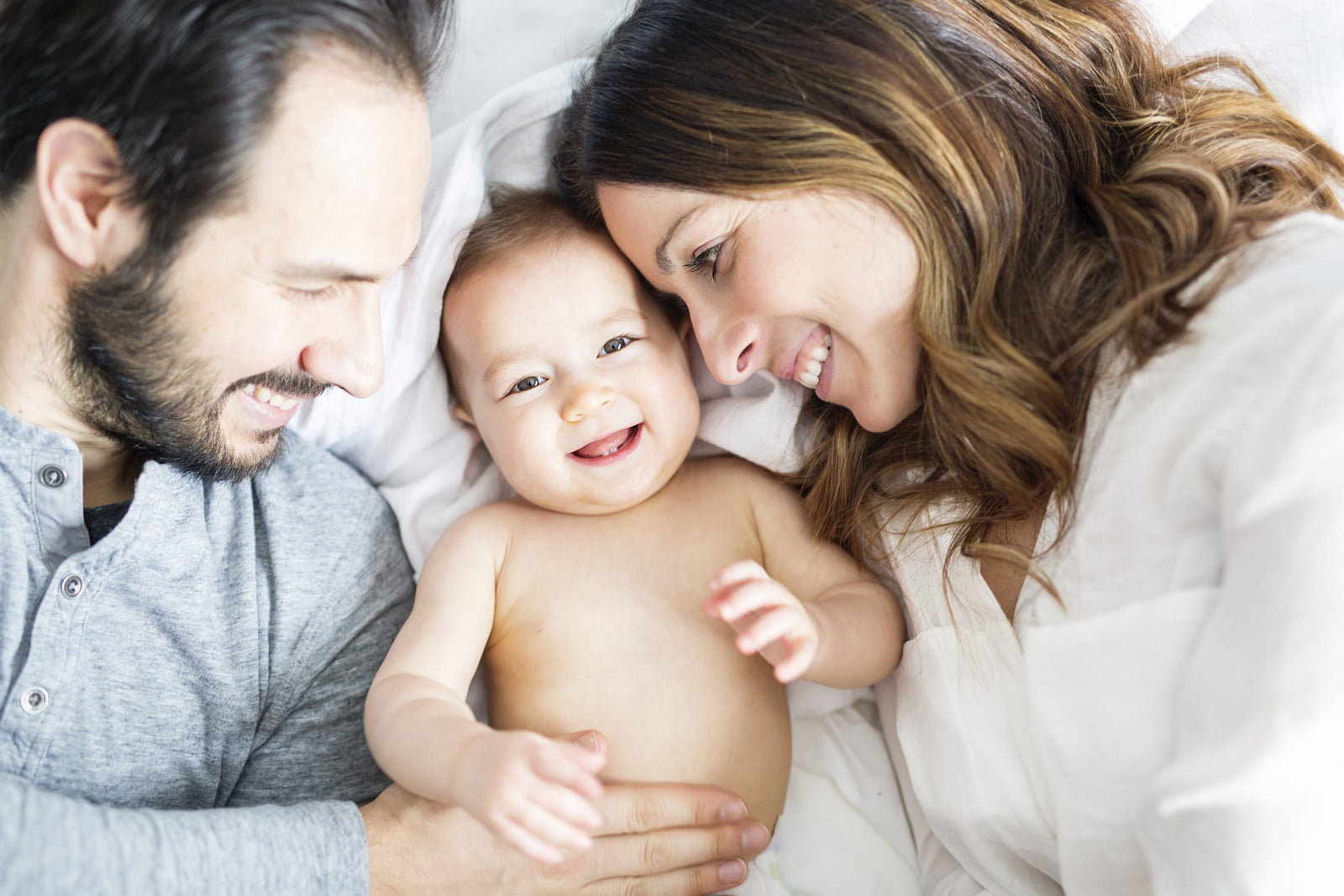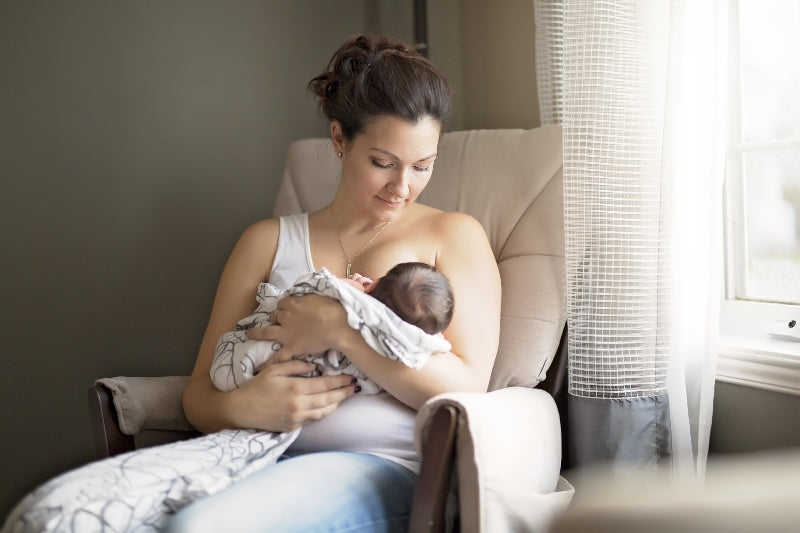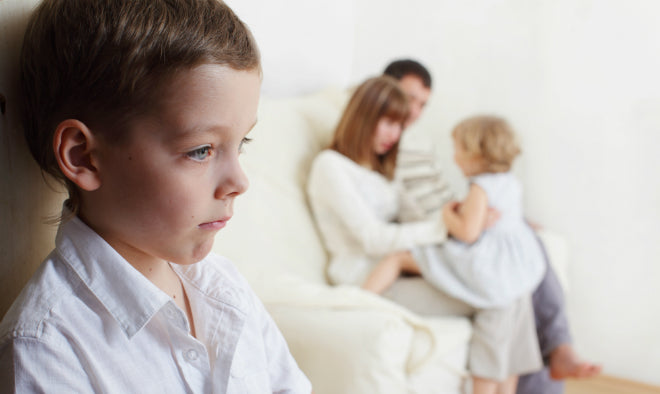Baby skin is so wonderfully soft and delicate. Protecting and caring for it is a matter of course for parents. But what should you do if small spots suddenly appear? Many parents initially fear a rash or an allergy. Fortunately, it is often only harmless baby acne. It appears quite spontaneously and initially scares new moms and dads a little. We explain why there is no need to worry.
What is newborn acne actually?
The name for this form of acne is no coincidence. Because it does indeed occur when your little sunshine is only a few days old. Boys are more frequently affected by acne in babies than girls. Basically, a hormonal change is associated with it, which is somewhat comparable to later puberty. Here too, the appearance of the skin changes due to hormonal changes in the body.

Woman during the last months of her pregnancy
It all starts in the womb. This process takes its course in the last weeks of pregnancy. The baby's immune system is strengthened and the lung function is also slowly prepared for future work. All of this is brought about by the release of certain hormones by the mother.
Newborn acne then appears in an infant between the tenth and fourteenth day of life.
In some cases, it is delayed by a few days or weeks. Newborn acne may also appear around the third week of life. In general, this is due to a first, genuine growth spurt in conjunction with a hormonal change or adjustment in the body. These are the triggers for the change in the skin and the formation of small pimples. They have a red border and can form pus in the center.

Baby acne on the face
Please never think of squeezing the pimples or opening them by gently rubbing them. This damages the delicate baby skin. Unlike teenagers, acne in babies does not need to be treated. Baby acne first forms on the face. Then pimples appear more frequently on the neck, in the chest area and finally all over the body. Some doctors refer to this as "blossoming" of the skin. This may sound frightening at first, but it is still harmless even in its more severe form.
Is newborn acne dangerous?
No! This is in fact a completely painless and harmless skin change that occurs as a result of hormonal changes. Neither a lack of hygiene nor excessive cleanliness lead to it.
However, it is important that you do not equate infant acne with teenage acne.
Stay away from soaps and lotions that have been specially developed for teenage or adult acne. These products are in no way suitable for baby skin.
What helps against baby acne? The right care for delicate baby skin
You cannot and do not really need to treat acne on a baby in the classic sense. However, many parents ask themselves: What helps against baby acne and are there any home remedies that could help with baby acne? As far as baby skin care is concerned, the motto is: less is more! It is generally advised to avoid soaps and lotions. Warm, clear water is cleansing enough.

Use a soft terry cloth washcloth to clean the skin. Never rub too hard, just gently stroke the skin. A newborn baby is not really dirty or very sweaty in the classic sense, so washing with clear water is in fact sufficient. If your child has newborn acne, the skin is a little more sensitive. Therefore, dry your little one thoroughly and carefully after washing.

A cuddly towel with a velvety soft surface is not only pleasant on the skin. It also prevents skin irritation when drying off. Avoid creams and lotions. These could further clog the pores and in exceptional cases only make the newborn acne worse.
What home remedies can be used?
It is better not to experiment if you are not completely sure. When using various home remedies, it must of course be clarified in advance whether the rash is actually acne in the baby or not. If in doubt, consult a pediatrician. A doctor can often give good advice on how to treat baby acne with a home remedy.

Virgin olive oil
Virgin olive oil is most commonly used. This is also used for babies with neurodermatitis. It is a wonderful home remedy for treating irritated skin. Pure almond oil from the pharmacy or directly from the health food store is also recommended.

Pure almond oil
Midwives often advise adding a little breast milk to the bath water, for example. This can be done by squeezing a little milk from the breast directly into the water.
You can also use breast milk as a substitute for lotions and dab it thinly onto the affected areas of skin.
These old household remedies are still used today. Last but not least, plenty of air and light is good for baby's skin. However, always make sure that you do not expose your baby to direct sunlight or draughts. Treating baby acne is not the devil's work and is quickly a thing of the past with these simple remedies.
Skin changes in babies: Does cradle cap always occur with baby acne?
Many parents are rightly unsure when they notice changes to the skin. Basically, an examination should clarify whether the baby's rash is a serious skin condition, such as neurodermatitis, or just harmless acne in babies.

Baby examines its own skin
While baby acne starts on the face and sometimes spreads to other parts of the body, parents occasionally notice a scaly rash on the scalp. This is known colloquially as cradle cap. However, only very few babies actually suffer from cradle cap. Often, this scaly baby rash is known as scalp gneiss, which often occurs in conjunction with acne in babies.

Easily remove loose dandruff with a soft baby brush
Please do not try to scratch or rub the dandruff off the head. On the one hand it is painful for the child and on the other hand it can lead to skin irritation. To treat the annoying dandruff, drizzle a few drops of oil onto the affected areas of skin and massage it in a little. You can then use a soft baby brush to effortlessly remove the loose dandruff.
It's all half as bad
Cradle cap usually disappears by itself. Sometimes, however, these harmless scales can accompany a person throughout their entire life. In adulthood, there are of course other treatment options available. Neither baby acne nor cradle cap is dangerous or painful for your baby. You can rest assured.

Pamper your little one with lots of cuddles, warm baths and cuddle your darling in velvety-soft towelling. The little spots will disappear just as quickly as they appeared, namely all by themselves.










